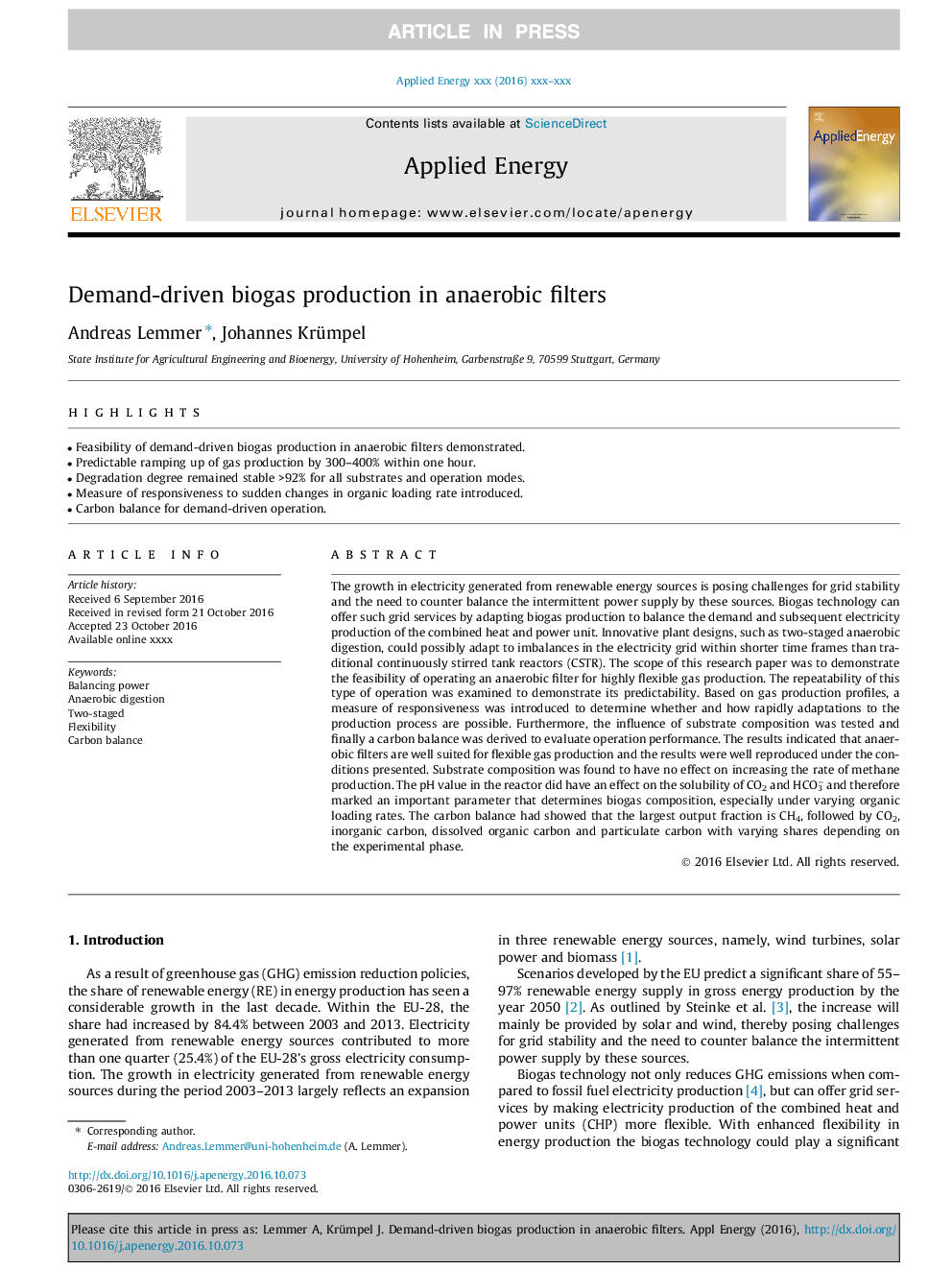| کد مقاله | کد نشریه | سال انتشار | مقاله انگلیسی | نسخه تمام متن |
|---|---|---|---|---|
| 4917023 | 1362738 | 2017 | 10 صفحه PDF | دانلود رایگان |
عنوان انگلیسی مقاله ISI
Demand-driven biogas production in anaerobic filters
ترجمه فارسی عنوان
تولید بیوگاز با توجه به تقاضا در فیلترهای بی هوازی
دانلود مقاله + سفارش ترجمه
دانلود مقاله ISI انگلیسی
رایگان برای ایرانیان
کلمات کلیدی
قدرت متعادل کننده، هضم بی هوازی دو مرحله ای انعطاف پذیری، تعادل کربن،
موضوعات مرتبط
مهندسی و علوم پایه
مهندسی انرژی
مهندسی انرژی و فناوری های برق
چکیده انگلیسی
The growth in electricity generated from renewable energy sources is posing challenges for grid stability and the need to counter balance the intermittent power supply by these sources. Biogas technology can offer such grid services by adapting biogas production to balance the demand and subsequent electricity production of the combined heat and power unit. Innovative plant designs, such as two-staged anaerobic digestion, could possibly adapt to imbalances in the electricity grid within shorter time frames than traditional continuously stirred tank reactors (CSTR). The scope of this research paper was to demonstrate the feasibility of operating an anaerobic filter for highly flexible gas production. The repeatability of this type of operation was examined to demonstrate its predictability. Based on gas production profiles, a measure of responsiveness was introduced to determine whether and how rapidly adaptations to the production process are possible. Furthermore, the influence of substrate composition was tested and finally a carbon balance was derived to evaluate operation performance. The results indicated that anaerobic filters are well suited for flexible gas production and the results were well reproduced under the conditions presented. Substrate composition was found to have no effect on increasing the rate of methane production. The pH value in the reactor did have an effect on the solubility of CO2 and HCO3â and therefore marked an important parameter that determines biogas composition, especially under varying organic loading rates. The carbon balance had showed that the largest output fraction is CH4, followed by CO2, inorganic carbon, dissolved organic carbon and particulate carbon with varying shares depending on the experimental phase.
ناشر
Database: Elsevier - ScienceDirect (ساینس دایرکت)
Journal: Applied Energy - Volume 185, Part 1, 1 January 2017, Pages 885-894
Journal: Applied Energy - Volume 185, Part 1, 1 January 2017, Pages 885-894
نویسندگان
Andreas Lemmer, Johannes Krümpel,
